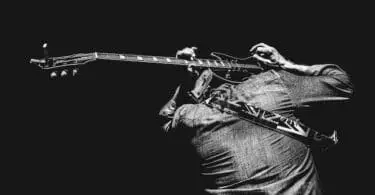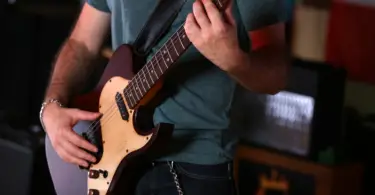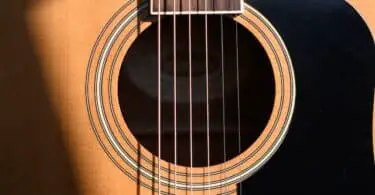Tuning a guitar is one of the most complex skills to understand by a guitarist or musician. But with the help of guitar tuners, guitar players can now tune their guitars quickly.
An untuned guitar will obviously not produce the correct frequencies and intonation. It also takes time to adjust the guitar strings to get or achieve the proper tone and frequency, especially when tuning your guitar in a traditional way.
A guitar tuner ensures that the strings are in the right tones and sounds. To learn more about this essential guitar tool, this post will tackle the parts of a guitar tuner and help you identify string notes.
Quick Links
Guitar Tuner Parts
A tuner is a part of a guitar that measures frequencies produced by the vibrations of the guitar strings, either in an electric guitar or acoustic guitar. Guitar tuners are also called guitar machine heads. It is placed at the guitar’s headstock that is used to adjust the tension of the strings. Below are the parts of a guitar tuner and their functions:
1. Tuning Post
The tuning post is an essential part of the guitar tuner or machine headstock. Tuning posts have two types: the vintage style and the modern style of machine or tuner.
Other tuning posts or machines have slots in the post with holes in the shaft where the guitar strings are placed. The tuning post is sealed where guitar strings are repeatedly run through and over the post until it coils over itself.
Restringing requires a more advanced skill to cut the unused and excess strings. Some guitar players prefer using a vintage-style tuning post to add design or aesthetic looks for their guitars. An additional benefit of having a vintage-style tuning post can restring the guitar easily.
2. Cylinder
This part of the guitar tuner is the one that holds the guitar strings and where the coil is repeatedly rounded. There are a lot of types of cylinders that are made to be better than other types.
However, the most important function of a cylinder is to have a secure hold for the strings to push to the center of the piece. The cylinder is an essential part of a guitar tuner to keep the guitar strings close with other strings, which also avoids the slipping of guitar strings.
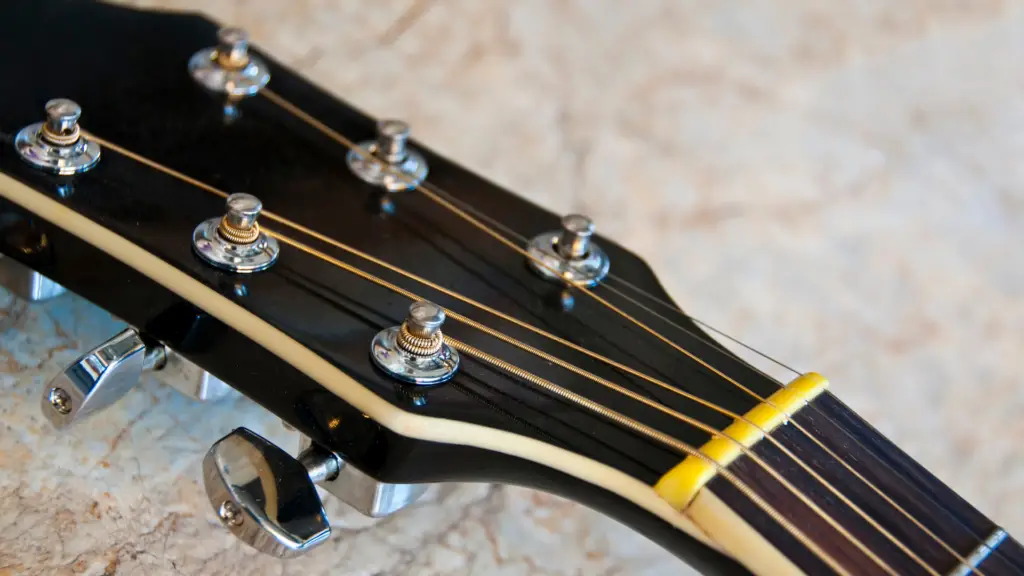
3. Pinion Gear
This part works clockwise and counterclockwise when you tune your guitar, depending on how you twist the tuning head. Pinion gears are the wheels attached to the guitar post and worm drive, which is responsible for turning the cylinder. Turning the cylinder adjusts the tension of the guitar strings.
4. Tuning Head
It is the part of the guitar tuner where you grip to tighten or loosen the strings. Aside from that, it is also called the grip piece or button.
Tuning heads come in different styles and looks, and they are different in colors and materials used. The tuning heads you commonly see are made with plastic and steel alloy with silver and gold colors.
The tuning head helps you to remove and change strings by twisting the buttons counter-clockwise to loosen. While when you put and replace new strings, you can turn the buttons clockwise to tighten. This part of the guitar tuner is also responsible for adjusting or increasing the tension of the guitar strings.
5. Worm Drive
It is the part of the tuner that works as a screw mechanism that is attached between the pinion gear and tuning head. Ratio specification is determined between the pinion gear and worm drive.
The specification of the gears determines the movement of the tuning head. The higher the ratio it has, the more it needs to be turned. However, the lesser movement of the gears can give you more accurate and better notes.
6. Bore Hole
Most of the guitars have six boreholes to accommodate and hold the guitar strings. This part of the guitar tuner also allows the tuning post to pass through.
Bore holes depend on how many guitar strings you have. It is also similar to a bass guitar with only four bore holes.
There are different types of bore holes that depend on what type of bushings you used, and it is used to hold and put the machine head in place from the headstock.
7. Rubber Casing
This part is only common for guitars with sealed machines to prevent the guitar machine from moisture and dirt. The rubber casing is also important to a guitar tuner to avoid being easily damaged and keeps the machine or guitar gears lubricated as well.
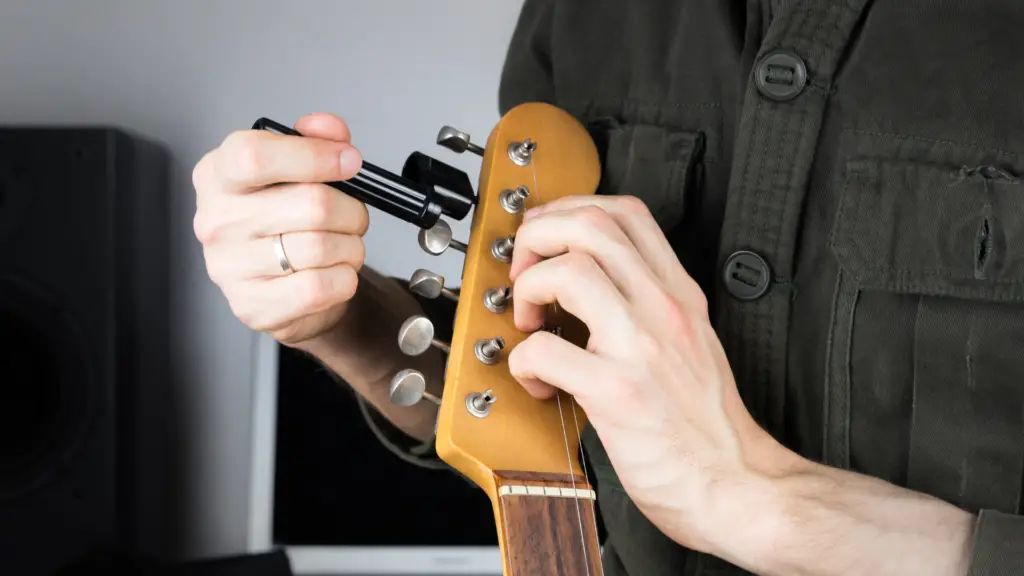
8. Locking Machine
The locking machine is an attachment to the guitar machine, which increases the stability of the tuner as it locks in the strings. It also helps to prevent the guitar strings from slipping.
Locking machines work by a mechanism in a wheel type. If the guitar strings are threaded or rounded through the cylinder, the wheel will be twisted or turned clockwise to put the strings in the proper position
9. Bushing
It is the part of the guitar tuner that fastens the tuning post from the side of the guitar to the headstock or machine. It serves as a holder for the whole machine nuts in the headstock.
There are two common types of bushing: the press-in style and the bolt threaded bushing. The press-in style is commonly used for traditional types of guitar tuners which appear to be smaller. The bolt threaded bushing is for modern machines or tuners with a larger size or diameter that provides greater support for the tuner shaft.
10. Fixtures
It is also called the indexing pin. These fixtures or screws are used to hold the machine tightly and maintain it in its proper place to prevent it from wobbling and moving. Indexing pins often fall off from the headstock and get damaged easily when changing guitar strings more often.
Some Final Words
To sum it up, knowing the parts of a guitar tuner might not be necessary if you are not interested in knowing what is inside that small device. But, it can give you an idea on how your guitar tuner works and what components are making it work.
With basic knowledge about the parts and functions of a guitar tuner, you can easily identify them to make your guitar stay in tune. Guitar players also have the choice to use a guitar tuner or stick with the traditional way to do so.

